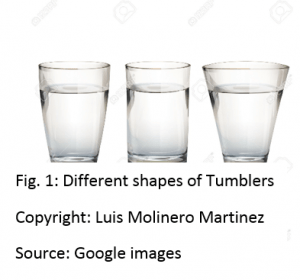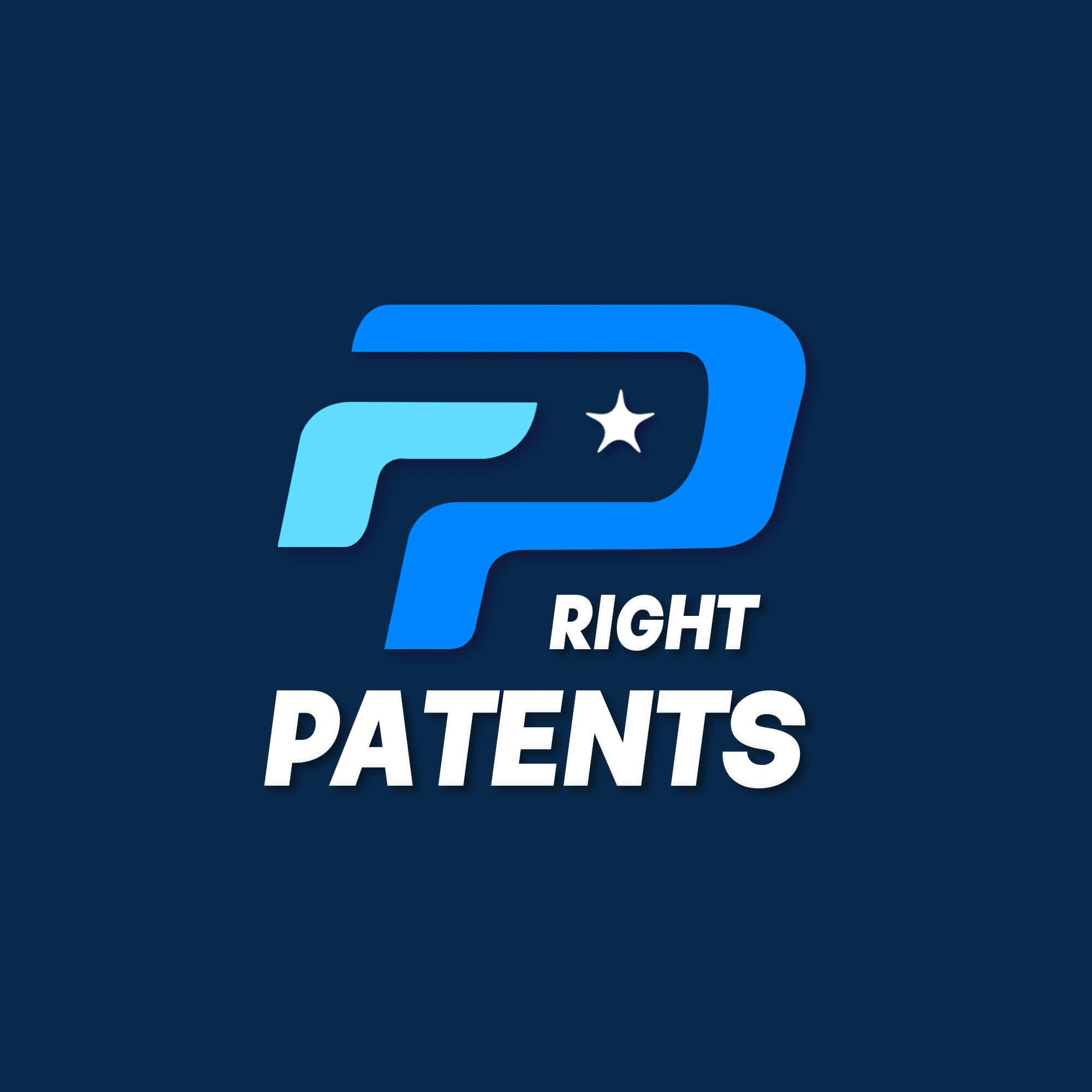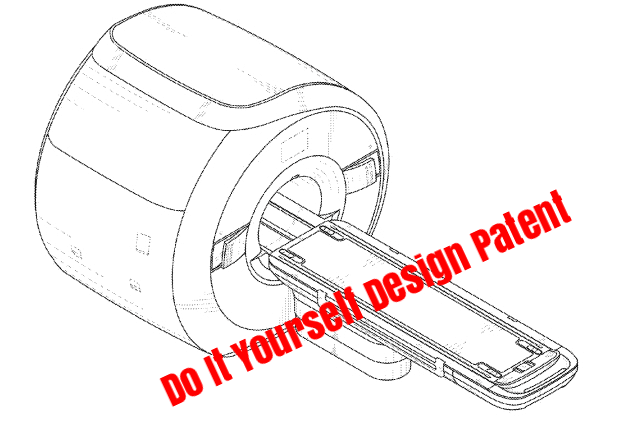File Design Patent on Your Own: Individual Inventors or small companies may not have enough resources to hire experts to file on their behalf, in such case you can file your design patent application yourself. This article provide guidance in filing the application for design patents yourself.
1. Introduction
Patent is an important tool to protect the interests of the inventors from infringement, theft or copying. Patenting process differs from country to country. Most of the big enterprises use the services of the expert organizations to file patent applications for their inventions and manage their patent’s maintenance.
2. Design Patent



Design is defined as the virtual ornamental characteristics embodied in, or applied to an article of manufacture (USPTO). The design is embodied in the shape or appearance of an article. A tumbler can have many shapes and appearances as shown in Fig.1.
Each tumbler has its own design which is different from the others. The design of the tumblers will differ in its quality, shape, appearance, and pattern. Depending upon the type of customers, a manufacturer of tumbler may choose a design for the tumbler that meets the needs of the intended customers.
The shape and appearance of the tumbler is part of the tumbler itself, and cannot be separated out from the tumbler. The tumbler is used for serving water and therefore has an industrial value. The inventor can apply for the design patent for the shape and appearance of the tumbler and also the utility patent for the tumbler itself or for both: the design patent and the utility patent.
Get error-free patent drawings in 4-6 days. Free Unlimited Revisions. Price starts at $30.
3. Are patent drawings essential for the design patent?
Drawings are essential part of the patent application for the disclosure of the design, which must be new, original, and ornamental. In fact, enclosing the drawings in sufficient number with the application for the design patent is more important in comparison to attaching drawings for a utility patent. Drawings act as mean to disclose the ornamentation and appearance of the article as part of the application for the design patent .
4. What are the specific requirements for patent drawings?
Patent drawings have certain essential features, which in the case of US, are necessary to comply with the requirements of 35 U.S.C. 112. Some of the features include the following:
Sufficient number of views
According to 35 U.S.C. 112, sufficient number of views of the invention should be enclosed with the patent-application so that there is complete disclosure of the appearance of the design claimed. The views may include front, rear, and left sides, top and bottom views to disclose the design of the article completely. If the right and left view are same as in the case of tumbler in Fig.1, only one view is required to be included. Similarly, if the bottom is flat as in the case of the tumbler in Fig.1, the bottom view should not be included. If a sectional view represent the shape or appearance better, then it will be essential to include the sectional view.
But, in case, the sectional view represents the functional aspects not forming part of the claimed design, such a view should not be included as part of the patent application.
- Show the contours of the three dimensional surfaces by shading
USPTO rules direct the use of appropriate shading in the drawings to show the contour of the three dimensional surfaces of the articles. Making a choice between the line and the strip and the way the light should come from the upper left has been explained (USPTO). It is important to note that if the shape of the design is not clearly presented by the disclosure as filed, addition of shading after filing is considered as a new matter. Anything that is added to, or from, the claim, drawings or specifications is a new matter that was not shown at the time of original application (35U.S.C 132 and 37 CFR § 1.121).
- Solid black surface shading
Solid black surface shading is used to represent the color black as well as color contrast only, otherwise it is not permitted.
- Use of broken or dashed line in the design
Use of broken or dashed line indicates that the design elements are not included in the patent. It is used for the purpose of illustration only. Structure considered necessary to show the environment in which the design is used, may be represented in the drawing by broken lines.
- Use of exploded views
Exploded views are used to display element hidden from view.
- Avoid inconsistency in the drawing
According to USPTO, there should not be inconsistency in the patent drawings. The patent application will be rejected, if inconsistency is noticed in the two views of an article.
- Do not combine photographs and ink drawing
Combining photographs and drawing is not allowed.
Photographs
Photographs used in place of ink drawings should disclose design claimed for the article and should not disclose the environmental structure (37 CFR 1,152)
Inventors filing design patent application in the US should take every precaution to ensure that the patent application comply with the rules and regulations of the USPTO. For more details refer to our article at https://rightpatents.com/successful-patent-drawings-for-design-patents/ .
What type of errors are frequently found in drawings for design patent?
In spite of the fact that USPTO has clearly made the rule and regulations about the drawings for the design patent, inventors frequently make mistakes in the drawings submitted for patenting the design. Usually, there are three reasons commonly found in the drawings for design patents: Inconsistency, Non-enablement, and Ambiguity.
Inconsistency
At times, drawings are not prepared correctly by not taking care of the minute details and may show different dimensions for the article in two views. The inconsistency in the two views does not tell as to what exactly is intended to be patented. Such a drawing is not acceptable according to USPTO rules and regulations. In some cases, it may be good luck for the inventor that the inconsistency in the drawing is not noticed by the patent examiner and the patent is granted.
But, in case, the inconsistency is challenged at a later stage and matter is taken to the court of law through a law-suit, the patent granted may be lost forever. The example of Yummie Tummie is an eye-opener in which Yummie Tummie, the owner of US Design Patent 666,384; lost the patent to Spanx. Spank challenged the grant of patent to Yummie Tummie claiming that the design was a copy of their protected design.
Yummie Tummie sued in Federal court, but the patent was thrown out because the height of the material that was shown in a side view was inconsistent with the height of the material shown in a back view. The court held it was a “fatal inconsistency” and held that the patent was not valid. You can refer to this case in detail at https://rightpatents.com/avoiding-common-errors-in-drawings-for-design-patents/
Non-enablement
The disclosure of the design in the patent drawings should enable someone “skilled-in-the-art” to build the object. This is one of the requirements of the design-patent drawings. Some of the drawings submitted for the grant of patent in the past have not passed this qualifying statement and go in the category of Non-enablement of drawings. The error made in preparing the drawings missing this requirement is important. Only expert in making design-patent drawings can meet this requirement. It is strongly recommended to take help of an expert to avoid wastage of time and money.
Ambiguity
In some of the drawings, one view attached with design patent application may not show all the details of the design. In order to disclose the design completely, more numbers of drawing can meet this requirement. Drawings, which do not support adequately the design patent are not complete and therefore rejected due to error.
Learn more about the frequent errors in the drawings for the design-patent.
Consequences of submitting drawings with errors
The result of submitting drawings with such drawbacks is either return or rejection of the design-patent-application. The loss in terms of time lost and the money spent in re-submission of the drawings is huge and at times may discourage the inventor to pursue the patent application. All the efforts made in developing the invention will go waste.
The way out.
One of the way outs to overcome this problem is to avoid the errors in the drawings by enclosing enough number of drawings to disclose full details of the design. The number of such drawings showing all the required details correctly can be obtained with the help of an expert and preferably through an expert agency in the field.
What are the advantages of hiring an expert agency to make drawings for design patent?
Expert agency in making drawings for the design patent have the knowledge, know-how and the latest tools for making the drawings of high quality complying to the rules and regulations of USPTO. They have the excess to latest soft wares and computers facilities. They are familiar with the directions, rules and regulations, and standards for preparing the correct drawing disclosing the design fully and adequately. The time taken by such agencies is much shorter and the results obtained are of high quality. The service charges of the expert service provider are very nominal for the purpose. If any issue is raised by the patent examiner, the service provider handles them easily and quickly. The chances of success in obtaining the desired patent for the design are extremely high.
Once you have high-quality patent drawings with you then you can file a design patent application yourself by going to USPTO here and choosing as unregistered E-filer. If you want to know US design patent cost then please refer to https://rightpatents.com/us-design-patent-cost/
For any clarifications or assistance in filing your design patent application please contact Invention Patent Drawings by filing the below form.

